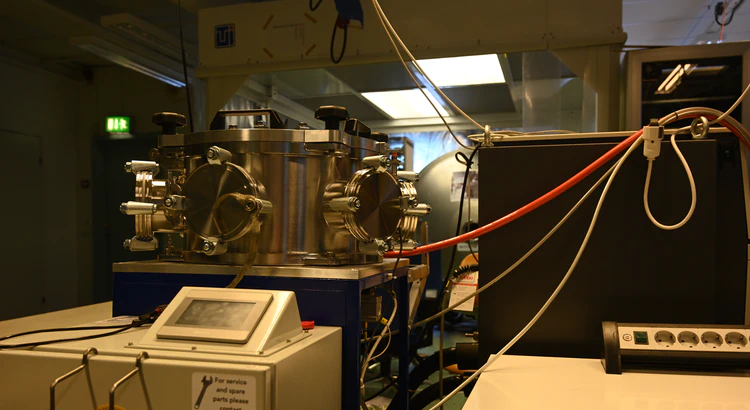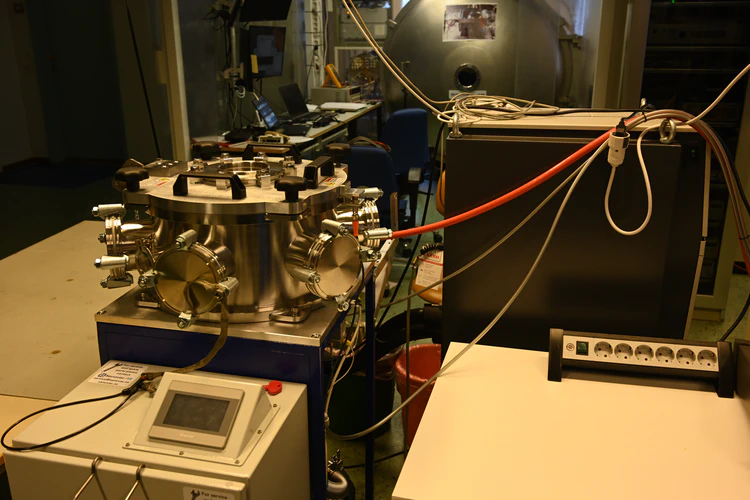
Micro Thermal Vacuum Chamber
Space is a thermally challenging environment as no conductive or convective heat transfer to the the surrounding environment is possible. This leaves only radiative heat transfer, the weakest of the three heat transfer types, to cope with the varying temperatures in space and ensuring that your instrument or satellite survive. It is possible to simulate this environment and the effects of you instrument or satellite and apply the obtained results on Earth in a thermal vacuum chamber. During this thermal vacuum test the survival of your instrument or satellite is proven, as required by all major space agencies.
For bigger test items you can also consider using our TVC025 thermal vacuum system.
Technical specifications
- Dimensions Chamber (inside)
- $380 mm$ diameter, $140 mm$ height
- Pressure
- <$10^{-6} mbar$
- Temperature
- $°C$ to $°C$ nominal, Oil temperature control system for table
- Logging
- Pressure and temperature logging through control system
- Vacuum Flanges
- $2$ DN 40 ISO-KF
- $6$ DN 100 ISO-K
- $1$ window (DN 160 ISO-K)
- Vacuum Feed Throughs
- List of possible connectors available on request
- Dimensions Mounting Plate
- $250 mm$ x $250 mm$
- Material Mounting Plate
- Copper
- Pattern Mounting Plate
- M5 Holes with $25 mm$ center to center
- Shroud
- No built in shroud
- Optional Equipment
- Residual gas analyzer
This small TV chamber can accommodate test devices of a maximum size of x x cm ³. For ensuring best thermal contact, the test device is placed on a Cu-table.
The fixture matrix facilitates attachment of the test item to the table.
The measurement control system allows for programmable T-cycles.

Photos: Annelie Klint Nilsson, IRF
